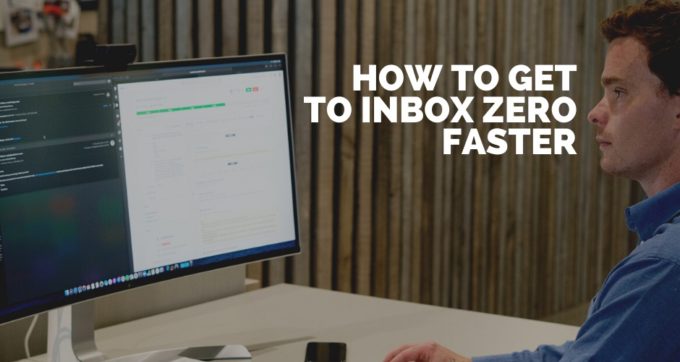Email management continues to take up a huge portion of the day for most knowledge workers.
A McKinsey study found that:
- On average, 28% of work time is spent on email.
- We check email on average 11 times per hour.
- 84% keep email open in the background while working.
- 64% use notifications to learn about new letters.
- 70% of all received letters open within the first six seconds after receipt.
To help deal with this awful problem, I’d like to share some practical tips on how to deal with your email faster.
Don’t want to read this post? Listen to the podcast instead:
This episode of the Paul Minors Podcast is sponsored by TextExpander. Click here to sign up and get 20% off!
1. Reduce the volume of email you receive
The first thing you should do is try to reduce the volume of email you get in the first place. Responding to email faster (which we’ll get to in a minute) is the goal but we ideally want to reduce the size of the problem first.
In a previous post I shared some tips on how to reduce the volume of email that you get. Go and have a read, but basically:
- Learn how to close the loop quicker.
- Identify ways to avoid getting the same email ever again.
- Unsubscribe!
- Use email rules to auto-archive.
- Start fewer conversations.
2. Reply with templates
Hands down, the fastest way to respond to an email is with a pre-written email template. If I ever find myself writing the same email again and again, I use a tool like TextExpander (affiliate link) to create a template. This means I don’t have to go looking through old emails to find and copy a previous reply that I want to reuse. And I don’t have to go looking through a document. I can just spit out my response with a few keystrokes.
And even if the reply I’m writing can’t be written with a template, I have a few expressions and phrases I type a lot which I can easily insert into an email.
If you’re not using email templates, I guarantee you’re spending longer than you need on email. Last month I saved around 4.5 hours using TextExpander!
Here’s a recent video I made on how to get started with TextExpander and another one on how I use it.
3. Reply with a video
Sometimes I’ll get a long or complex email that I can see is going to require me to type a detailed reply. If I can, I’ll use a tool like CleanShot X to record a video instead.
This is great when clients email me questions about Asana or Pipedrive. Instead of typing a detailed response, I can simply record a video of me showing them on my screen. This is usually quicker and more useful for the client who can now see exactly what I’m talking about.
Even if I don’t have anything to show, I’ll turn on the camera and respond to the email verbally sharing my thoughts via video. Again, I often find this quicker than typing a long response.
Here’s a video on how to get started with CleanShot. I downloaded CleanShot as part of my Setapp subscription (affiliate link).
4. Use automation
Email rules are typically used to organise emails into folders or labels. But you can also use rules to perform actions on your email.
For instance, I use email rules to forward all invoice and receipts to Zapier. I then have Zapier set up to auto-save these documents to my Dropbox account. So instead of having to do this manually, I have the email rules and Zapier do the work for me. This is great for repeatable processes like emails you get every month.
Does this take a bit of time to set up? Yes. but I’ve had this system running for 5 years now so it’s been well worth it.
Other related posts:
Like this post? Here are some other useful tips to help you manage email:
